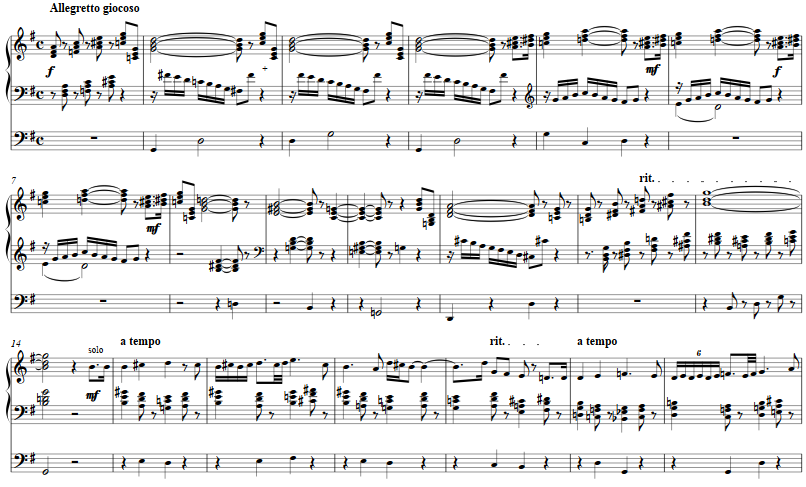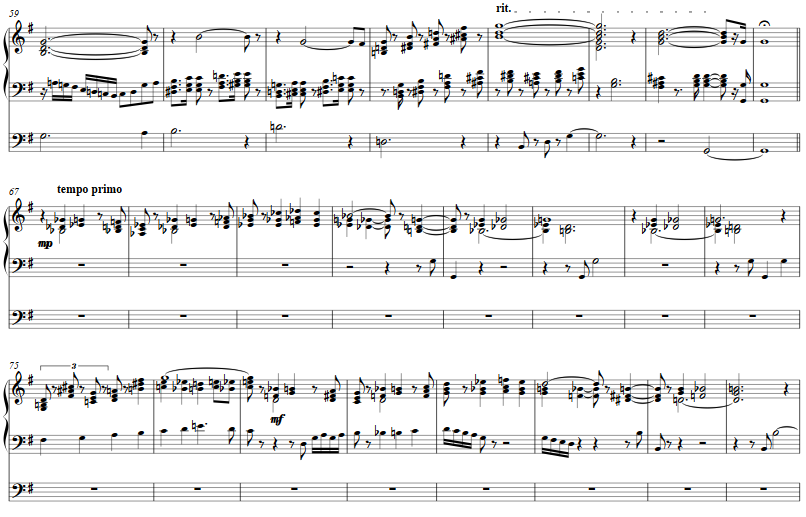Music and Texts of GARY BACHLUND
Vocal Music | Piano | Organ | Chamber Music | Orchestral | Articles and Commentary | Poems and Stories | Miscellany | FAQs
Toccata and Fugue for Major Triads - (2016)
for organ
Years ago when asked in a postgraduate seminar to analyze a certain "modern" work, I opted to use a scattergram (also called scatter chart or scatter diagram) which simply counted and plotted a diagram of the intervals that the composer had chosen in writing the work. The plot was more instructive than other attendees' choices to try and use other "modern" analytic tools, and showed that the composer in fact had chosen no octaves, perfect fourths and fifths, very few thirds and sixths; the diagram's data was heavily weighted towards seconds and sevenths and the tritone, showing that composer's stance was towards dissonance (as defined by the previous common practice period) as aesthetic foundation. Thinking on an inversion of this twentieth-century "modern" practice, I thought simply to compose this musical essay built on major triads.
The opening gambit alternates hands, and a simple scale decorates the held tonic G major. After stating this tonic, the right hand proceeds in parallel major triads with extending the scheme, major triads across a major scale. Sections for solo voice are then accompanied by parallel major triads in second inversion, which explains the seeming distant harmonic colors unified by this.

The toccata ends in octaves without third or fifth. The fugue subject is stated thereafter in its three voices to carry the major triads further. G-flat functions quite as an ersatz leading tone to the overall tonic, as the opening three triads are related by common tone in first inversion. The subject cadences in G as tonic, and then answers appear, beginning a major third above as at measure 77.
7 pages, circa 6' 00" an MP3 demo is here:

The score is available as a free PDF download, though any major commercial performance or recording of the work is prohibited without prior arrangement with the composer. Click on the graphic below for this organ score.
Toccata and Fugue for Major Triads
